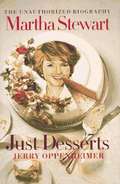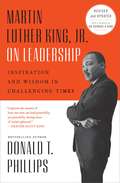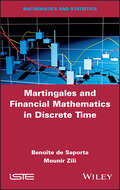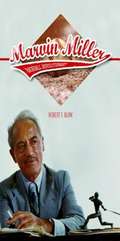- Table View
- List View
Martha Rinaldi: Should She Stay or Should She Go?
by Linda A. Hill Mark RennellaMartha Rinaldi has been an assistant product manager at leading beverage company Potomac Waters since graduating from business school. Rinaldi is frustrated by her relationships with her boss and a close co-worker. Even though she works hard to please her manager, she has received a negative performance evaluation for her first four months. Should Rinaldi leave Potomac for a standing job offer at a company she previously interned with or try to improve her current situation?
Martha Rinaldi: Should She Stay or Should She Go?
by Linda A. Hill Mark RennellaMartha Rinaldi has been an assistant product manager at leading beverage company Potomac Waters since graduating from business school. Rinaldi is frustrated by her relationships with her boss and a close co-worker. Even though she works hard to please her manager, she has received a negative performance evaluation for her first four months. Should Rinaldi leave Potomac for a standing job offer at a company she previously interned with or try to improve her current situation?
Martha Stewart (A)
by Christopher M. Bruner Lynn Sharp PaineExplores Martha Stewart's December 2001 sale of ImClone Systems common stock, the ensuing federal investigations into possible insider trading, and Stewart's criminal prosecution and sentencing. Discusses the impact of publicity on Stewart's company, Martha Stewart Living Omnimedia, and on her personal image, and raises issues of prosecutorial discretion. Challenges students to consider the validity of the insider trading charge against Stewart as well as the securities fraud charge included in the indictment, the appropriate sentence, and whether federal authorities unfairly singled out Stewart for investigation.
Martha Stewart - Just Desserts: The Unauthorized Biography
by Jerry OppenheimerDomestic Goddess Martha Stewart, once considered the epitome of perfection, has done a one-eighty. At the height of her game, as the head of a billion dollar corporation, she's been indicted in a shocking criminal insider trading case, and if convicted, the undisputed "doyenne of style" could be imprisoned.
Martha Stewart Living Omnimedia (A)
by Kerry Herman Susan Fournier Laura Winig Andrea WojnickiMartha Stewart Living Omnimedia (MSLO), a branded and integrated content and media company dedicated to "elevating the role of the homemaker," went public on October 19, 1999, creating a company with a market value of $1.73 billion, and a stake for Stewart worth $1.2 billion. Aretha Jackson, president of a private investment firm, must counsel a client on whether to invest in MSLO--a precarious prospect in light of the steady downward plunge in MSLO stock performance since the IPO. Risks outlined in the company's S-1 filing also highlighted special concerns specific to the management of the "Person-Brand." Could the company outlive Stewart? What if Stewart's reputation or image was tarnished? How, exactly, did the reputation of Stewart affect the value of the brand? Jackson must understand what meanings Martha Stewart claimed, and for whom, while also coming to grips with the meaning-management principles that applied in "managing Martha," the person and the brand. From a cultural meaning-management point of view, the person-brand context is unique in that it must consider two significant sources of meaning, both of which must be managed: 1) the public (the brand face) and 2) the private (the person face). Also considers the special meaning-management issues involved with multivocality of the brand proposition: i.e., the embodiment of multiple, and perhaps conflicting, meanings within one brand for various consumer audiences. This is an important meaning-management theme as it involves MSLO's engagements with K-Mart and the formulation of future line extension ideas.
Martin Blair
by Michael J. Roberts Howard H. StevensonMartin Blair is a first-time entrepreneur who draws on his experience in the food service industry to develop two different restaurant concepts almost simultaneously. In relating his experiences, he reveals several important concerns of the thoughtful entrepreneur, ranging from securing financing to building out physical spaces. Both restaurants are successful, and Blair now wants to grow the business. In particular, he must decide whether to grow one or both of the concepts, and whether to use franchising as a growth strategy for either, or potentially both. He must consider the pros and cons of franchising, which apply differently to each of his restaurant brands.
Martin Luther King Jr. and the Morality of Legal Practice
by Robert K. VischerThis book seeks to reframe our understanding of the lawyer's work by exploring how Martin Luther King Jr. built his advocacy on a coherent set of moral claims regarding the demands of love and justice in light of human nature. King never shirked from staking out challenging claims of moral truth, even while remaining open to working with those who rejected those truths. His example should inspire the legal profession as a reminder that truth-telling, even in a society that often appears morally balkanized, has the capacity to move hearts and minds. At the same time, his example should give the profession pause, for King's success would have been impossible absent his substantive views about human nature and the ends of justice. This book is an effort to reframe our conception of morality's relevance to professionalism through the lens provided by the public and prophetic advocacy of Dr. King.
Martin Luther King and the Struggle for Black Voting Rights
by David A. Moss Dean GrodzinsIn January 1965, Rev. Martin Luther King, Jr., the most prominent leader of the civil rights movement in the United States, launched a campaign of civil disobedience in Selma, Alabama, to bring national attention to disenfranchisement of black voters in the South. On Sunday, March 7, as part of this campaign, 400 mostly black protesters, not including King, tried to march across the Pettus Bridge, just outside Selma, only to be stopped by state troopers and local lawmen, who attacked them with tear gas and clubs. That night, all three national television networks broadcast film of the assault. The broadcasts sparked outrage against the attackers and sympathy protests across the country. King announced that he would lead a renewed march over the bridge on Tuesday, March 9. By early Tuesday morning, however, King had learned that President Lyndon Johnson, whose help he needed to win federal voting rights legislation, did not want him to march, and that a federal judge had issued a restraining order against the march until a hearing could be held. King thought his supporters' passions were so strong that he might not be able to cancel the march even if he wanted to, yet the modern civil rights movement had never before defied a federal court order. President Johnson's representatives told King that he might avoid violating the judge's order if he marched to the bridge and then turned around before crossing it. King did not say what he would do, however, and few of his supporters knew about the turnaround possibility. Several hours later, with television cameras recording the unfolding events, King led 2000 marchers to the bridge, where state troopers and lawmen waited. Should he try to turn the march around, which his followers might not accept, or try to cross the bridge, contrary to the president's wishes and a federal restraining order?
Martin Luther King, Jr., on Leadership: Inspiration and Wisdom for Challenging Times
by Donald T. PhillipsLeadership motivational speaker Donald T. Phillips, who has previously drawn organizational lessons for modern businesses from the careers of Abraham Lincoln and the Founding Fathers, turns to civil-rights leader Martin Luther King Jr. as a role model. A discussion of the Montgomery bus boycott, for example, draws out such principles as "Set goals and create a plan of action" and "Involve the people." More effective as a self-help book for business than as a biography, it does provide a useful introduction to King's life.
Martin Luther King, Jr.: A Young Minister Confronts the Challenges of Montgomery
by William W. George Richard Buhrman Andrew N. McLeanAs the Montgomery Bus Boycott starts, the young Martin Luther King Jr. faces challenges to his leadership goals, strategic vision, and personal and family safety. Makes extensive use of King's own words and writings and builds a portrait of a young, talented, and ambitious leader about to embark on a risky and new endeavor. Traces the development of King's professional goals, his theological and political education, his young family, and his nascent professional career. Raises questions about the role of fear and uncertainty, support networks, deeply held beliefs, and professional goals in leadership decision making.
Martin Luther King, Jr.: A Young Minister Confronts the Challenges of Montgomery
by Andrew N. Mclean William W. George Richard BuhrmanAs the Montgomery Bus Boycott starts, the young Martin Luther King Jr. faces challenges to his leadership goals, strategic vision, and personal and family safety. Makes extensive use of King's own words and writings and builds a portrait of a young, talented, and ambitious leader about to embark on a risky and new endeavor. Traces the development of King's professional goals, his theological and political education, his young family, and his nascent professional career. Raises questions about the role of fear and uncertainty, support networks, deeply held beliefs, and professional goals in leadership decision making.
Martin Marietta: Managing Corporate Ethics (A)
by Lynn Sharp PaineSenior managers at Martin Marietta are considering two questions: how to assess the company's seven-year-old ethics program; and how to deal with employees' fear of retribution--real or imagined--for alerting the corporate ethics office to potential problems. The case describes the company's ethics program, the process of integrating it into the organization, and the reactions and views of key managers. Intended to provide in-depth knowledge of one company's approach to managing corporate ethics and to permit students to evaluate the impact of the program. Exposes students to a range of issues involved in managing programs like the one in place at Martin Marietta.
Martin Marietta: Managing Corporate Ethics (A)
by Lynn Sharp PaineSenior managers at Martin Marietta are considering two questions: how to assess the company's seven-year-old ethics program; and how to deal with employees' fear of retribution--real or imagined--for alerting the corporate ethics office to potential problems. The case describes the company's ethics program, the process of integrating it into the organization, and the reactions and views of key managers. Intended to provide in-depth knowledge of one company's approach to managing corporate ethics and to permit students to evaluate the impact of the program. Exposes students to a range of issues involved in managing programs like the one in place at Martin Marietta.
Martin Smith: January 2002
by Josh LernerAn MBA student must choose between offers from three private equity organizations. Each organization has distinct strengths and weaknesses, and different implications for the student's career development. The case presents compensation and employment data about the private equity industry. Teaching Note: Introduces the private equity industry and the key offerings between groups.
Martin Smith: May 2000
by Josh Lerner G. Felda HardymonA new associate at a venture capital firm must choose which of three potential investments to recommend to the firm's partners. Each potential investment has strengths and drawbacks.
Martin Smith: May 2002
by Josh Lerner G. Felda Hardymon Ann LeamonMartin Smith, a recent HBS graduate, has just begun working with a leveraged buyout firm. His first assignment is to evaluate three different deals and make recommendations to the partners. As he studies the deals, he realizes that each has different merits and drawbacks and that his recommendation must take into account not only the specifics of each target company but also the situation of his firm. Also, he must consider the stage of his career and that of the senior partner.
Martingale Asset Management LP in 2008, 130/30 Funds, and a Low-Volatility Strategy
by Luis M. Viceira Helen H. TungIn early July of 2008, William (Bill) Jacques, Chief Investment Officer at Martingale Asset Management, a quantitative value-oriented investment manager in Boston, Massachusetts, was busy preparing for an upcoming meeting with the group that made new product decisions within the firm. The objective of the meeting was to review the backtesting and real-time investment results of a new minimum-variance strategy within the framework of a 130/30 fund. The performance results were very encouraging, but Bill still wondered if they were a fluke of the data, a result of data mining rather than the reflection of a true market anomaly. He wanted to discuss several possible explanations of the phenomenon, and to decide whether Martingale should offer the strategy to its clients.
Martingales and Financial Mathematics in Discrete Time
by Benoîte de Saporta Mounir ZiliThis book is entirely devoted to discrete time and provides a detailed introduction to the construction of the rigorous mathematical tools required for the evaluation of options in financial markets. Both theoretical and practical aspects are explored through multiple examples and exercises, for which complete solutions are provided. Particular attention is paid to the Cox, Ross and Rubinstein model in discrete time.The book offers a combination of mathematical teaching and numerous exercises for wide appeal. It is a useful reference for students at the master’s or doctoral level who are specializing in applied mathematics or finance as well as teachers, researchers in the field of economics or actuarial science, or professionals working in the various financial sectors.Martingales and Financial Mathematics in Discrete Time is also for anyone who may be interested in a rigorous and accessible mathematical construction of the tools and concepts used in financial mathematics, or in the application of the martingale theory in finance
Martini Klinik: Prostate Cancer Care 2019
by Michael E. Porter Jens Deerberg-Wittram Thomas W FeeleySince its establishment in 2005, Hamburg's Martini Klinik had single-mindedly focused on prostate cancer care with a commitment to measure long term health outcomes for every patient. A wholly owned subsidiary of the University Hospital Hamburg, Martini Klinik was a "hospital in a hospital" in close proximity to other medical departments and services. By 2019, Martini Klinik had become the largest prostate cancer treatment program in the world with 8,000 outpatient cases and more than 2,500 surgical cases annually. Patients came from all over Germany and from around the world. A new and expanded facility was under construction to have the capacity to manage more patients with prostate cancer.
Marvel Comics: The Untold Story
by Sean HoweInterweaves history, anecdotes, and analysis with more than one hundred interviews with Marvel insiders to reveal how Marvel, which introduced brightly costumed caped crusaders in the 1960s, became one of the most dominant pop cultural forces in contemporary America.
Marvel Enterprises, Inc.
by Anita ElberseThe management team of Marvel Enterprises, known for its universe of superhero characters that includes Spider-Man, the Hulk, and X-Men, must reevaluate its marketing strategy. In June 2004, only six years after the company emerged from bankruptcy, Marvel has amassed a market value of more than $2 billion. Originally known as a comic book publisher, the company now also has highly profitable toy, motion picture, and consumer products licensing operations. However, doubts about Marvel's business model and its growth potential continue to exist. Had Marvel's winning streak been just a fluke? Was marvel's success dependent on a limited set of blockbuster characters, most notably Spider-Man, and should Marvel continue to capitalize on those characters? Or was it time to seek growth in a larger set of lesser known characters? In exploring growth opportunities, was it wise for Marvel to venture outside its current business model and move into more capital-intensive activities? What marketing strategy would allow Marvel to sustain its success in the coming years? Includes color exhibits.
Marvel Enterprises, Inc. (Abridged)
by Anita ElberseThe management team of Marvel Enterprises, known for its universe of superhero characters that includes Spider-Man, the Hulk, and X-Men, must reevaluate its marketing strategy. In June 2004, only six years after the company emerged from bankruptcy, Marvel has amassed a market value of more than $2 billion. Originally known as a comic book publisher, the company now also has highly profitable toy, motion picture, and consumer products licensing operations. However, doubts about Marvel's business model and its growth potential continue to exist. Had Marvel's winning streak been just a fluke? Was Marvel's success dependent on a limited set of blockbuster characters, most notably Spider-Man, and should Marvel continue to capitalize on those characters? Or was it time to seek growth in a larger set of lesser known characters? In exploring growth opportunities, was it wise for Marvel to venture outside its current business model and move into more capital-intensive activities? What marketing strategy would allow Marvel to sustain its success in the coming years?
Marvin Miller, Baseball Revolutionary (Sport and Society)
by Robert F BurkMarvin Miller changed major league baseball and the business of sports. Drawing on research and interviews with Miller and others, Marvin Miller, Baseball Revolutionary offers the first biography covering the pivotal labor leader's entire life and career. Baseball historian Robert F. Burk follows Miller's formative encounters with Depression-era hard times, racial and religious bigotry, and bare-knuckle Washington politics to a successful career in labor that prepared Miller for his biggest professional challenge--running the moribund Major League Baseball Players Association. Educating and uniting the players as a workforce, Miller embarked on a long campaign to win the concessions that defined his legacy: decent workplace conditions, a pension system, outside mediation of player grievances and salary disputes, a system of profit sharing, and the long-sought dismantling of the reserve clause that opened the door to free agency. Through it all, allies and adversaries alike praised Miller's hardnosed attitude, work ethic, and honesty. Comprehensive and illuminating, Marvin Miller, Baseball Revolutionary tells the inside story of a time of change in sports and labor relations, and of the contentious process that gave athletes in baseball and across the sporting world a powerful voice in their own games.





